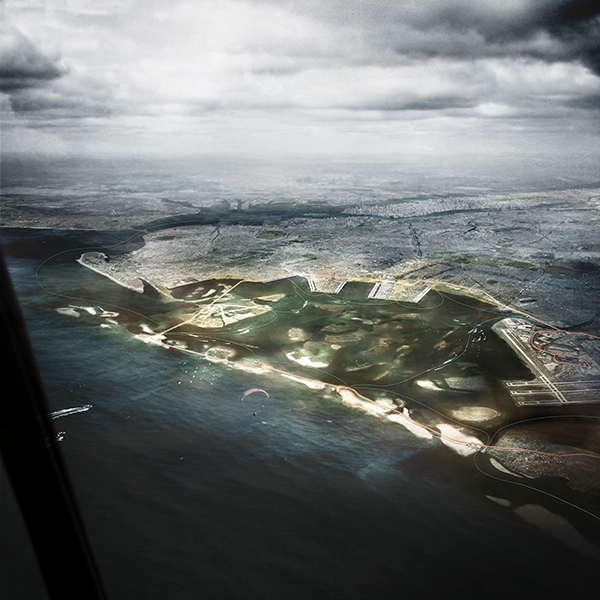
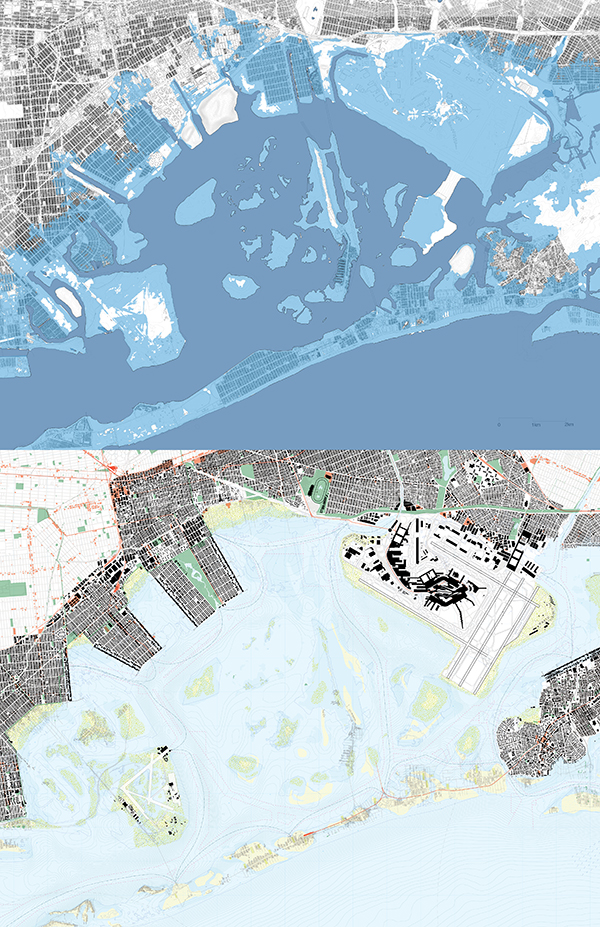
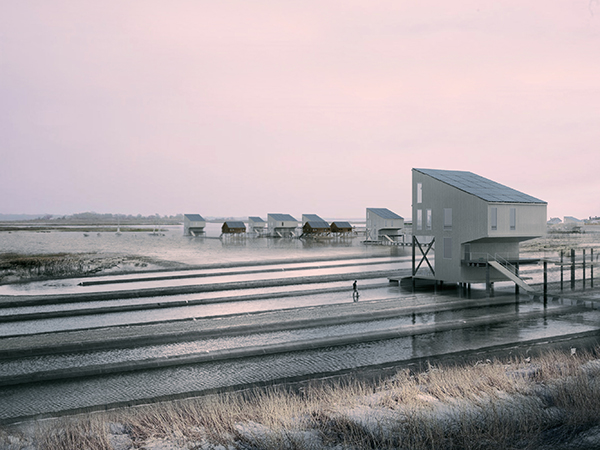
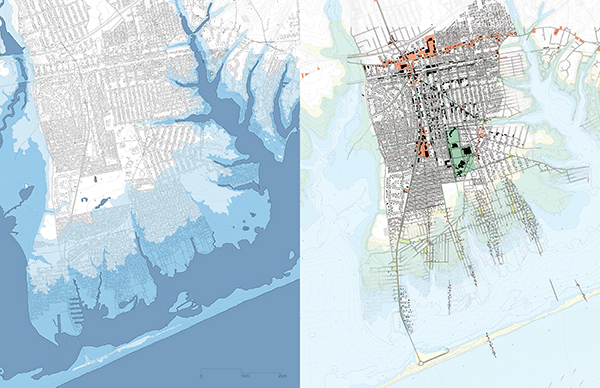
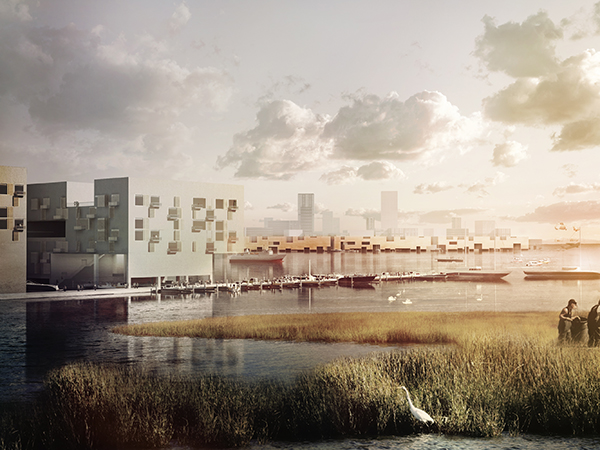
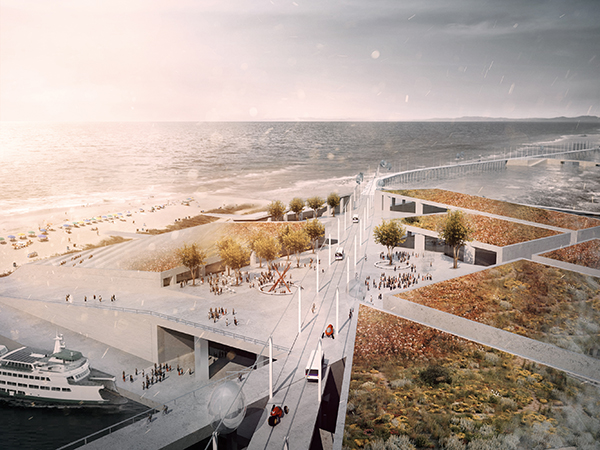
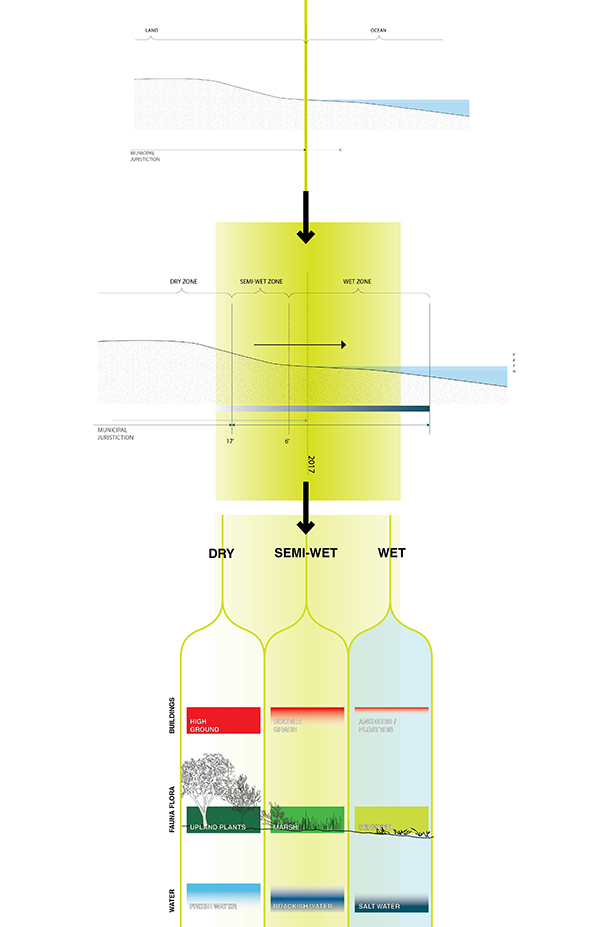







with DLANDstudio
2017
In January 2017, RPA launched a design competition which called on architects, landscape architects, designers and urban planners to visually demonstrate how policy changes, new investments, and innovative thinking proposed in the 4th Regional Plan - A Region Transformed (to be released October 2017) can transform different geographic areas in the Tri-State region and prepare them for the next 25 years. Rafi Segal and DLANDstudio were selected to propose visions and designs for the future of the Bight, the region’s Ocean Corridor.
The Bight is the notch in the region’s coast where ocean currents conspire to pile sand, forever redrawing the shore. “The Bight” is also an invention — a hard coastline extensively built during the 20th century, now stiff with aging settlements determined (but ill-suited) to stand their ground against storms and sea level rise. These opposing forces, where the immovable city meets an unstoppable nature, define its uncertain future. It’s time to blur the line. To relieve this tension, which threatens hundreds of miles of coast, hundreds of thousands of residents, and hundreds of billions of dollars in property losses, we propose replacing the hardened edge separating the city and nature with a new “landscape economic zone” — a buffer in which land and water commingle, creating new spaces for habitation, conservation, work and play. Rather than futilely trying to hold the line, the zone’s mantra is “receive, protect, adapt.” Strengthen urban spines and nodes on higher ground to receive new residents at higher densities. Protect low-lying areas using the absorptive capacity of the buffer, and adapt to a more amphibious lifestyle in the zone — transforming the coastline into the new urban frontier.
The result is a less sprawling and more productive coast, made all the more resilient by tailoring homes, neighborhoods, and cities to this new reality. To test our hypothesis, we chose three sites representing three urban scales of the Bight in three snapshots from the future:
• Jamaica Bay, New York (2067) — a half-submerged Jamaica Bay protects its edges while doubling as New York City’s new sunken central park.
• Mastic Beach, New York (2050) — well-managed retreat produces one of Long Island’s most desirable retirement communities nestled inland from a coastal “energy farm.”
• Sea Bright, New Jersey (2030) — a vanishing barrier island refuses the inevitable and becomes a test bed for “the flood life.”
Each scenario poses an opportunity to raise questions around the futures of energy, community, finance, and work in the region. Ranging from the rapid transition toward renewable energy to the redefinition of leisure in an era of intense automation, these seismic shifts go hand-in-hand with reimagining the Bight as a new open space for America’s most populous region, rather than an increasingly untenable line in the sand.
Team: Rafi Segal & DLANDstudio (Susannah Drake), Sarah Williams, Greg Lindsay, Brent Ryan, Benjamin Albrecht
Project team: Mary Lynch-Lloyd, Chaewon Ahn, Jan Casimir, Mary Hohlt, Erin Wythoff, Charles Huang
Research team: Dennis Harvey, Zach Postone, Ellen Shakespear, Xinhui Li